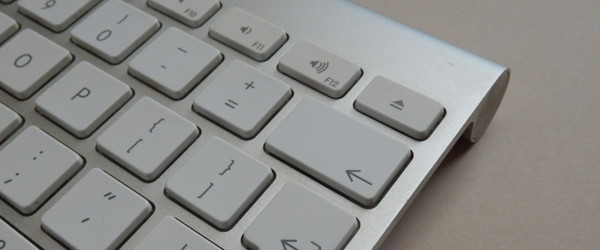Advanced Materials and Fabrication for Coherent Superconducting Qubits -
A.
Program OverviewInnovative solutions are sought for the Coherent Superconducting Qubits Programwithin the Intelligence Advanced Research Projects Activity (IARPA).
The Program is envisioned to begin May 1, 2009 and end by June 1, 201 4. The U.S.Army Research Office (ARO) and IARPA will conduct this BAA in closepartnership.
This BAA solicits proposals that will lead to substantially extended coherence times in superconducting qubits.Two Levels of proposals are sought, with particular interest in application to thephase qubit:Level I proposals will seek to accomplish all of the following Program Goals:(1) fundamental understanding and insights into defects in superconductingqubits that currently limit coherence time and readout contrast; (2) means tocharacterize, measure and definitively discriminate between these separatedefects; and (3) advanced materials, constructions and fabrication methods toeliminate these defects.Level II proposals will seek to accomplish Level I goals as well as thefollowing additional Program Goal:
(4) demonstrate substantially extendedcoherence times in superconducting qubits fabricated from foregoingdevelopments.With regard to developing fundamental understanding of superconductingqubit defects, there are several research topics of interest; including but notlimited to:- The origin of defects in lossy materials leading to two-level-systems thatcouple to qubit state transitions; defects whose population for example is reflectedby the characteristic splitting density observed in readout spectroscopy of thephase qubit.- The origin of 1/f noise (charge, current and flux noise) and associatedelectronic mechanisms affecting qubit performance as a function of temperature,but with emphasis on the operating conditions of the qubit.
(e.g.
for the phasequbit 25 mK, low power, GHz ).-The role of interface and surface quality attributes including:-physical uniformity, smoothness and definition-chemical composition, cleanliness or contamination (stoichiometry,deleterious oxides, impurities )-morphology (crystallinity, crystal orientation, grain size )-stability of all of the above (e.g.
a junction is considered unstable fromwhich oxygen diffuses into adjacent layers, resulting in an evolution ofstoichiometry and potentially crystallinity and thus electronic properties(e.g.dielectric loss tangent))- The effects of coherence length mismatch between dissimilar top and bottomelectrodes- Novel measurement techniques for isolating decoherence mechanisms andquantifying their relative contribution.- Defects that may be intrinsic to specific device architectures such as junctiontype (SIS, SNS, ScS (constriction or microbridge junctions) or SvS (vacuumjunctions)), junction geometry, qubit geometry and layout.- The correlation between alternative materials metrics and qubit performance- The role overall qubit size and junction bias current plays, in combinationwith defects, in enhancing or reducing energy decay and phase coherence indifferent forms of qubits.
For example, ultra small flux and transmon qubits (withultra-small junctions) have demonstrated better coherence performance (T1 andT2) than larger flux and current-biased phase qubits (with larger junctions).- The role defects in junctions plays in contributing to energy loss whenincorporated into different configurations of resonant circuits from coplanarwaveguides to lumped-element resonators, challenging the notion of"dissipationless" Josephson junctions.- New concepts in decoherence mechanismsAny combination of the above and or additional topics may be included in aproposal.
In general, for all topics pursued in developing fundamentalunderstanding of superconducting qubit defects, proposals should focus on:a) developing a full understanding of the defect types, the mechanisms bywhich they occur, the mechanisms by which they affect the qubit, and thequbit performance characteristics they limit (coherence time, contrast, etc.),b) the means for definitive characterization and measurement of those defectsin the presence of other defects, and subsequentlyc) the most effective means for their elimination.Note:
proposals should also describe test platforms to be used in initial studies ofdecoherence mechanisms, materials screening and process development.
Testplatforms such as, but not limited to resonators and antennas should be proposedin appropriate detail, including physically descriptive drawings or photographsand electrical schematics.
Details should be given on how the test platform willmeasure the desired materials properties and how, if possible, the platform can beused to equivalently reveal qubit performance metrics.
The correlation betweenselected materials metrics and qubit performance should be unambiguouslysupported by a description of theoretical as well as experimental evidence.With regard to advanced materials and fabrication methods, there are severalresearch topics of interest; including but not limited to:- Tunnel junctions of high physical, chemical, morphological, etc quality andstability, as well as high critical current and critical current uniformity- Ultra low-loss dielectrics for insulators and junctions and characterization ofdetrimental effects of impurities and imperfections therein as a result of thefabrication process- Advanced electrode materials and or passivation layers to minimize 1/f noisefrom interfaces, electrode surfaces and wiring- Control of contamination from magnetic materials, such as iron- High purity materials for sputtering targets- Innovative qubit designs that may for example a) minimize or eliminatematerials contributing to decoherence (e.g.
through vacuum insulators, etc ), orb) circumvent deleterious mechanisms intrinsic to conventional geometries (e.g.through alternative geometries and or vacuum or normal metal or constrictionbarriers)- Fabrication techniques providing superior materials and reproducibility- Fabrication quality of electrodes, including the effects of rough edges- Chamber(s) characterization (e.g., temperature, gases, other materials in thechamber) for depositing films and oxidation for fabricating reproducible highquality qubits- New concepts in materials and fabrication techniques or qubit designsAny combination of the above and or additional topics may be included in a givenproposal.
In general, for all topics pursued in advanced materials and fabricationmethods, proposals should focus on developing materials advances, fabricationtechniques, and junction or qubit designs that will substantially eliminatedecoherence mechanisms and significantly improve qubit performance.
Program OverviewInnovative solutions are sought for the Coherent Superconducting Qubits Programwithin the Intelligence Advanced Research Projects Activity (IARPA).
The Program is envisioned to begin May 1, 2009 and end by June 1, 201 4. The U.S.Army Research Office (ARO) and IARPA will conduct this BAA in closepartnership.
This BAA solicits proposals that will lead to substantially extended coherence times in superconducting qubits.Two Levels of proposals are sought, with particular interest in application to thephase qubit:Level I proposals will seek to accomplish all of the following Program Goals:(1) fundamental understanding and insights into defects in superconductingqubits that currently limit coherence time and readout contrast; (2) means tocharacterize, measure and definitively discriminate between these separatedefects; and (3) advanced materials, constructions and fabrication methods toeliminate these defects.Level II proposals will seek to accomplish Level I goals as well as thefollowing additional Program Goal:
(4) demonstrate substantially extendedcoherence times in superconducting qubits fabricated from foregoingdevelopments.With regard to developing fundamental understanding of superconductingqubit defects, there are several research topics of interest; including but notlimited to:- The origin of defects in lossy materials leading to two-level-systems thatcouple to qubit state transitions; defects whose population for example is reflectedby the characteristic splitting density observed in readout spectroscopy of thephase qubit.- The origin of 1/f noise (charge, current and flux noise) and associatedelectronic mechanisms affecting qubit performance as a function of temperature,but with emphasis on the operating conditions of the qubit.
(e.g.
for the phasequbit 25 mK, low power, GHz ).-The role of interface and surface quality attributes including:-physical uniformity, smoothness and definition-chemical composition, cleanliness or contamination (stoichiometry,deleterious oxides, impurities )-morphology (crystallinity, crystal orientation, grain size )-stability of all of the above (e.g.
a junction is considered unstable fromwhich oxygen diffuses into adjacent layers, resulting in an evolution ofstoichiometry and potentially crystallinity and thus electronic properties(e.g.dielectric loss tangent))- The effects of coherence length mismatch between dissimilar top and bottomelectrodes- Novel measurement techniques for isolating decoherence mechanisms andquantifying their relative contribution.- Defects that may be intrinsic to specific device architectures such as junctiontype (SIS, SNS, ScS (constriction or microbridge junctions) or SvS (vacuumjunctions)), junction geometry, qubit geometry and layout.- The correlation between alternative materials metrics and qubit performance- The role overall qubit size and junction bias current plays, in combinationwith defects, in enhancing or reducing energy decay and phase coherence indifferent forms of qubits.
For example, ultra small flux and transmon qubits (withultra-small junctions) have demonstrated better coherence performance (T1 andT2) than larger flux and current-biased phase qubits (with larger junctions).- The role defects in junctions plays in contributing to energy loss whenincorporated into different configurations of resonant circuits from coplanarwaveguides to lumped-element resonators, challenging the notion of"dissipationless" Josephson junctions.- New concepts in decoherence mechanismsAny combination of the above and or additional topics may be included in aproposal.
In general, for all topics pursued in developing fundamentalunderstanding of superconducting qubit defects, proposals should focus on:a) developing a full understanding of the defect types, the mechanisms bywhich they occur, the mechanisms by which they affect the qubit, and thequbit performance characteristics they limit (coherence time, contrast, etc.),b) the means for definitive characterization and measurement of those defectsin the presence of other defects, and subsequentlyc) the most effective means for their elimination.Note:
proposals should also describe test platforms to be used in initial studies ofdecoherence mechanisms, materials screening and process development.
Testplatforms such as, but not limited to resonators and antennas should be proposedin appropriate detail, including physically descriptive drawings or photographsand electrical schematics.
Details should be given on how the test platform willmeasure the desired materials properties and how, if possible, the platform can beused to equivalently reveal qubit performance metrics.
The correlation betweenselected materials metrics and qubit performance should be unambiguouslysupported by a description of theoretical as well as experimental evidence.With regard to advanced materials and fabrication methods, there are severalresearch topics of interest; including but not limited to:- Tunnel junctions of high physical, chemical, morphological, etc quality andstability, as well as high critical current and critical current uniformity- Ultra low-loss dielectrics for insulators and junctions and characterization ofdetrimental effects of impurities and imperfections therein as a result of thefabrication process- Advanced electrode materials and or passivation layers to minimize 1/f noisefrom interfaces, electrode surfaces and wiring- Control of contamination from magnetic materials, such as iron- High purity materials for sputtering targets- Innovative qubit designs that may for example a) minimize or eliminatematerials contributing to decoherence (e.g.
through vacuum insulators, etc ), orb) circumvent deleterious mechanisms intrinsic to conventional geometries (e.g.through alternative geometries and or vacuum or normal metal or constrictionbarriers)- Fabrication techniques providing superior materials and reproducibility- Fabrication quality of electrodes, including the effects of rough edges- Chamber(s) characterization (e.g., temperature, gases, other materials in thechamber) for depositing films and oxidation for fabricating reproducible highquality qubits- New concepts in materials and fabrication techniques or qubit designsAny combination of the above and or additional topics may be included in a givenproposal.
In general, for all topics pursued in advanced materials and fabricationmethods, proposals should focus on developing materials advances, fabricationtechniques, and junction or qubit designs that will substantially eliminatedecoherence mechanisms and significantly improve qubit performance.
Agency: Department of Defense
Office: Dept of the Army -- Materiel Command
Estimated Funding: Not Available
Office: Dept of the Army -- Materiel Command
Estimated Funding: Not Available
Obtain Full Opportunity Text:
Full Announcement
Additional Information of Eligibility:
Not Available
Full Opportunity Web Address:
http://www.arl.army.mil/www/DownloadedInternetPages/CurrentPages/DoingBusinesswithARL/research/08-r-0011.pdf
Contact:
Ernest DixonProcurement AnalystPhone 919-549-4270
Agency Email Description:
ernie.dixon@us.army.mil
Agency Email:
ernie.dixon@us.army.mil
Date Posted:
2008-08-01
Application Due Date:
2009-01-14
Archive Date:
2009-01-15
Social Entrepreneurship
Spotlight
Calgary Social Enterprise Offers High-Tech Services by People with Autism

Meticulon, a project of Autism Calgary Association in partnership with the federal government and the Sinneave Family Foundation, operates as a social enterprise that renders high-tech services provided by people with autism, leveraging their natural abilities at requiring attention to detail, repetition, and sequencing.

